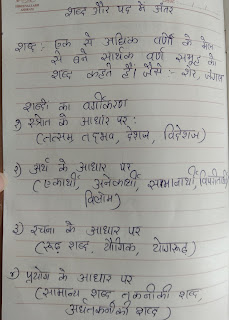Social Science History Chapter 2: Socialism in Europe and Russian Revolution (Summary of the topic taught as on 23/04/2021)
Topics Covered:
Russian Revolution
Learning Objectives: Students will be able identify the economic and society during Russian Empire.
Students will be able to identify the events of 1905 Revolution.
Notes:
Russian Revolution:
- In 1914, Nicholas II ruled the Russian empire.
- The Russian Empire included territory around Moscow, current-day Finland, Latvia, Lithuania, Estonia, Parts of Poland, Ukraine and Belarus.
Economy and Society during Russian Empire
- About 85 percent of the Russian empire's population earned their living from agriculture.
- The industry was limited in number.
- Workers were divided into groups but they did unite to strike work when they were dissatisfied.
- Peasants had no respect for nobility, very unlike the French peasant.
- Russian peasants were the only peasant community which pooled their land and their commune divided it.
Socialism in Russia
- All political parties were illegal in Russia before 1914.
- In 1900, the Russian Socialist Democratic Labour Party was formed.
- It struggled to give peasants their rights over land that belonged to nobles.
- As land was divided among peasants periodically and it was felt that peasants and not workers would be the main source of the revolution.
- But Lenin did not agree with this as he felt that peasants were not one social group.
- The party was divided into Bolsheviks and Mensheviks.
- Lenin led Bolshevik group.
A Turbulent Time: The 1905 Revolution
- Liberals wanted to end of the autocracy of the Tsar.
- They worked towards demanding a constitution during the Revolution of 1905.
Bloody Sunday
- In 1904, Prices of essential goods rose so quickly that real wages declined by 20 percent.
- When four members of the Putilov Iron Works were dismissed, there was a call for industrial action.
- Over 110,000 workers in St. Petersburg went on strike demanding a reduction in working hours and increase in wages.
- This procession was attacked by the police and cossacks.
- Over 100 workers were killed.
- Strikes took place as a reaction.
- People demanded a constituent assembly.
- The Tsar allowed the creation of an elected consultative Parliament or Duma.
- The Tsar dismissed the first Duma within 75 days and announced the election of a second Duma.
- Tsar constituted the third Duma with conservative politicians.
Content Analysis:
1. Explain the extent of Russian Empire in 1914. (Tb pg no. 30) (03 Marks)
2. Mention the features of the Russian Economy at the beginning of the 20th Century. (Tb pg no.31) (05 Marks)
OR
Describe the economic condition of Russia before 1905. (Tb pg no. 31) (05 Marks)
3. Workers in Russia are divided by Social Groups. Justify. (Tb pg no. 31) (03 Marks)
4. In 1917, the peasants of Russia differed from other countries in Europe. Explain. (Tb pg no. 31 & 32) (3 Marks)
5. Describe the political condition of Russia before the revolution of 1905. (Tb pg no. 32) (05 Marks)
6. Describe the incident of Bloody Sunday. (Tb pg no. 33) (03 Marks)
7. State the effects of the 1905 Revolution. (Tb pg no. 33) (05 Marks)
8. Explain the reforms introduced in Russia by Tsar Nicholas II during the 1905 Revolution. (03 Marks) (Tb pg no. 33)
H.W.
Prepare the graphic organizer of the concept taught today.
